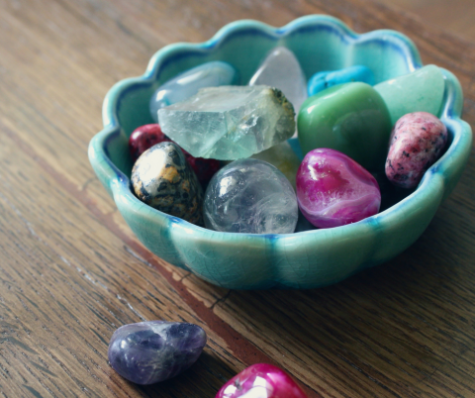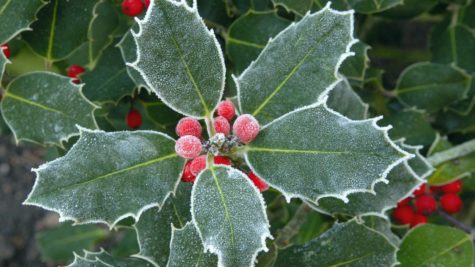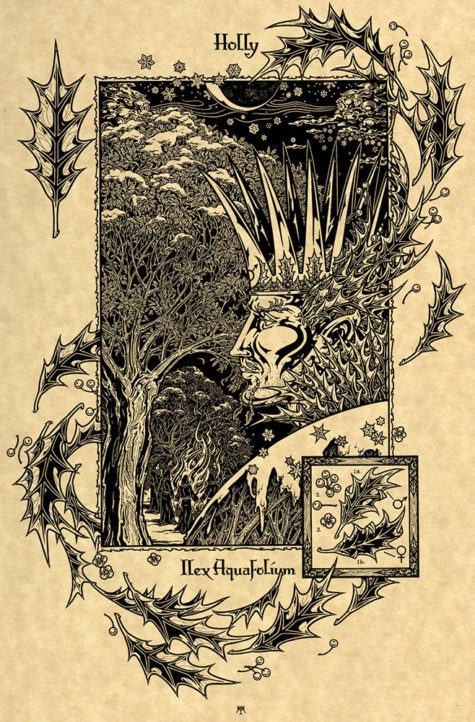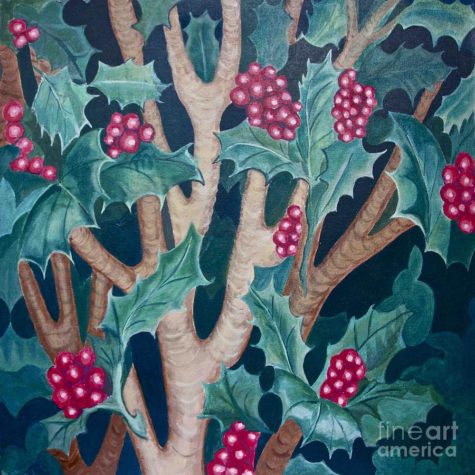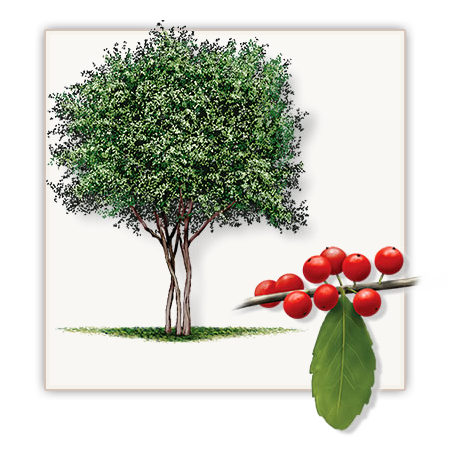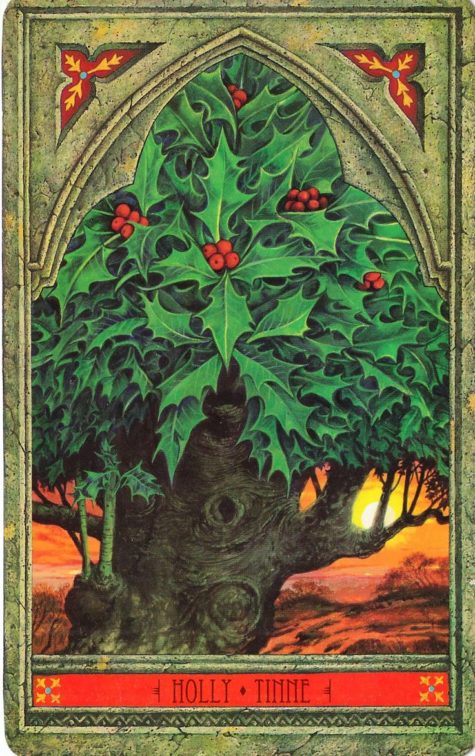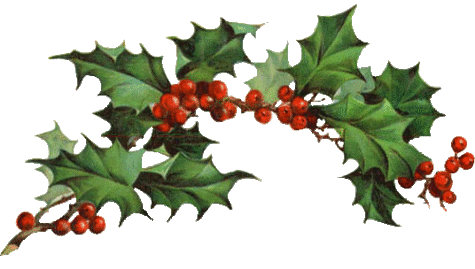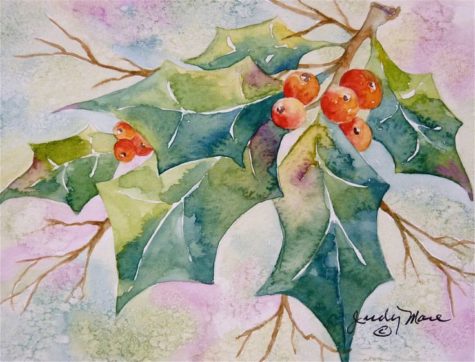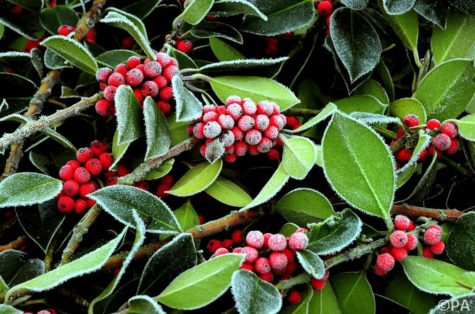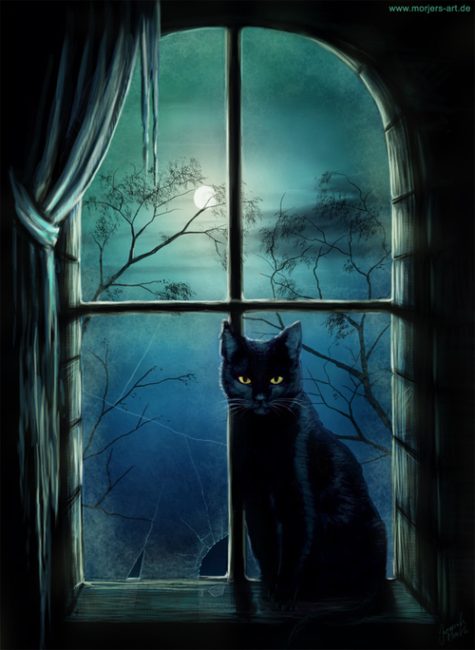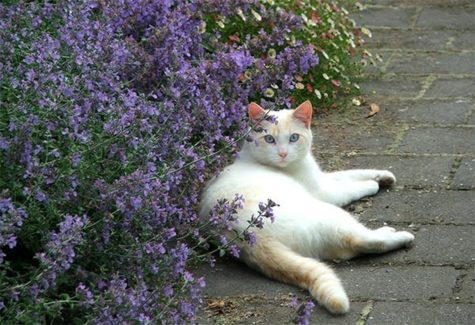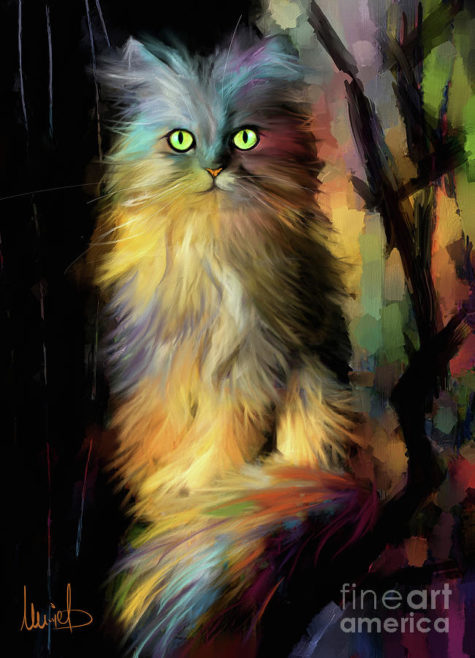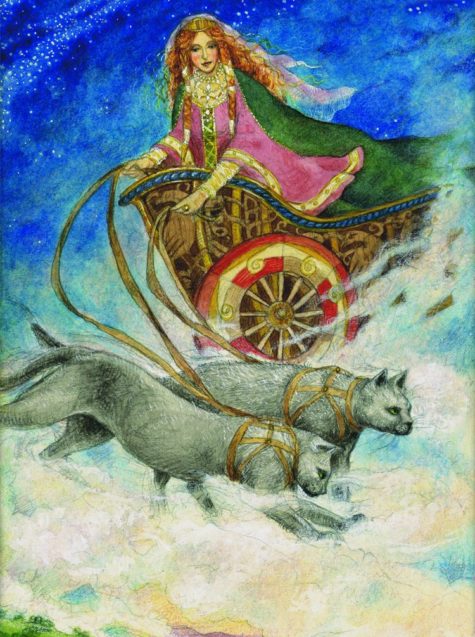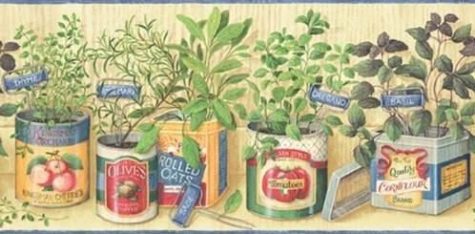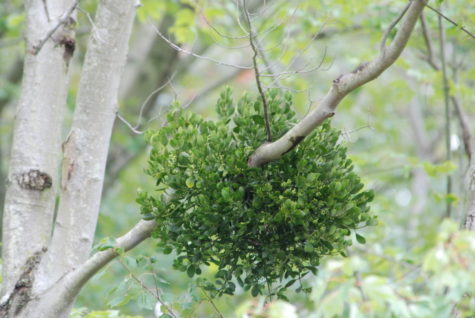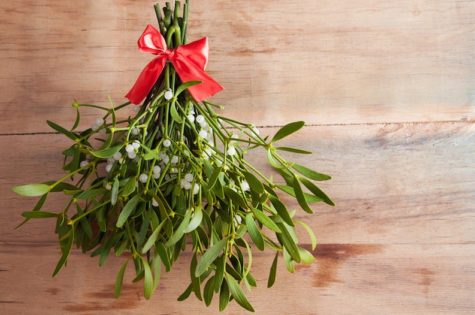Luck
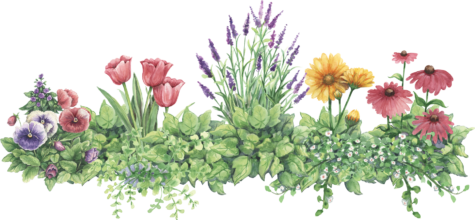 Here is list of herbs associated with luck:
Here is list of herbs associated with luck:
- Alfalfa
- Angel’s turnip
- Ash tree leaves
- Basil
- Blessed thistle
- Chamomile
- Cinnamon
- Clover
- Galangal root
- Grains of paradise
- Mustard seed
- Peony
- Yellow dock
- Wonder of the world root
- Jezebel root
- Mandrake root
- May apple root
- Little John chew
- Lucky hand
- Tonka beans
- Irish moss
- Queen of the meadow root
- Quince seeds
- Parsley
- Five-finger grass
- Swiss leaves
- Silver weed
- Seven barks
- Sacred bark
- John the conqueror root
- Four leaf clover
- Jamaica ginger root
- Rosemary
- Sumbul root
This is a list of gemstones believed to bring luck:
- Agate – protection from bad luck
- Amazonite – luck in hopes and dreams
- Amber – promotes luck and success
- Amethyst – brings luck in making your dreams come true
- Aventurine – brings good luck in chance or gambling
- Black Tourmaline – increases luck, brings success in business and relationships
- Carnelian – brings luck in physical situations (Athletes)
- Chrysanthemum Stone – brings luck by unexpected opportunities
- Citrine – promotes luck in sales
- Emerald – brings luck in keeping your lover faithful
- Garnet – stimulates success in business
- Malachite – brings luck in business
- Moonstone – brings good fortune and success
- Quartz Crystal – brings luck to get through the day
- Red Jasper – reduces fear of dark and night to increase luck
- Sodalite – promotes clear mind for creative luck
- Tektite – good luck
- Tiger’s Eye – provides insight, good luck
- Tourmaline – doubles your luck in any situation
- Turquoise – brings good fortune, protects from negative energy, symbolizes wealth
- Latin Name: Ilex aquifolium, Ilex opaca (American Holly)
- Celtic name: Tinne (pronounced: chihn’ uh)
- Known as: Tree of Sacrifice
- Folk or Common names: Holly, Aquifolius, Bat’s Wings, Christ’s Thorn, Holm Chaste, Hulm, Hulver Bush, Scarlet Oak, Kerm-Oak, Holy Tree
- Meanings: Holly actually means “holy”.
- Ruling Planets: Mars and Saturn
- Element: Fire
- Ruler: Sun
- Stone: Ruby, Bloodstone
- Birds: Cardinal, Starling
- Color: Red
- Deity: Lugh, Tannus, Thor, Danu
- Other: The Holly is an evergreen tree.
- Magickal Form: Wreaths, berries, leaves, wood
- NOTE: Holly berries are poisonous!
- Powers: Protection, Anti-Lightning, Luck, Dream Magick
Holly, being evergreen and having red berries, is a symbol of enduring life, and consequently it is considered a lucky plant almost everywhere. It is very unlucky to cut down a Holly tree.
The Holly Tree is one of the Seven Chieftain Trees of the Druids, its very name means “holy.” A Christian myth says that the blood of Christ formed the red berries of the holly. Holly is also associated with unicorns, since the unicorn is one of the Celtic symbols for this tree – the other symbol is the Flaming Spear.
Holly berries represent the blood of the Goddess. Use Holly berries with your favorite spell for female fertility and sexuality. Holly tames wild beasts and wards off storms and bad weather. Since it is a masculine herb, it brings good luck to men. The Romans considered Holly sacred and used it as a decoration during their Saturnalia celebrations.
Holly is sacred to the Winter Solstice, when it is used for decorating. Decorating one’s home with holly was believed to bring protection and good luck to the inhabitants in the coming year. Holly was used for decoration throughout homes with it being used for boughs over entrances to peoples’ homes or formed into holly wreaths that were hung on doors.
Sprigs of holly in the house at Christmastime will bring you good luck. But… be careful not to bring it indoors before Christmas Eve or your family will fall to squabbling. (Bet you wondered why that happened. grin…) Also be sure to burn it on 12th night (January 5th) or the good luck will turn sour.
Holly was the gift of good luck among the Romans celebrating their midwinter festivals. The northern tribes, who eventually brought about Rome’s downfall draped holly over doorways as shelter for friendly woodland spirits who could bring good luck to their houses.
The custom of bringing holly boughs into the home in the depths of winter has its origins in the original pre-Christian idea that its prickly leaves sheltered the fairy folk, who were delighted to come indoors at such a cold time of the year.
The wreaths are very popular around the Christmas / Yuletide season. Placing a ring of holly on doors originated in Ireland since holly was one of the main plants that was green and very beautiful with its red berries at this time of year and gave poor people a means of decorating their dwellings.
Unlike mistletoe, it appears in the Christmas Greenery of churches as well as ordinary houses. In some districts, when the rest of the decorations are burnt or thrown away at the end of the holiday, a holly-sprig is kept, to protect the house from lightning during the coming year.
- Planted near a house, holly repels negative spells sent against you.
- A bag of leaves and berries carried by a man increases his ability to attract women.
- Burn Holly leaves with Blessing Incense to protect the home and draw good luck.
- Place Holly above the door lintel for protection and to invite helpful spirits.
- Carry Holly berries in your pocket for protection.
The Holly tree (of which there are well over 150 species) can grow (albeit very slowly) to be as high as fifty feet and is native to most of Central and Southern Europe. Its white, star-shaped flowers bloom in the Spring and it bears shiny red berries in Autumn which last throughout the Winter season. The leaves of the Holly are shiny, dark green in color, elliptical in shape and have spiny points. In order to produce berries, both a male and a female tree are required. Only the female tree produces berries which, although lovely to look at, are poisonous.
Given its evergreen nature, the Holly represented immortality and was one of the Nine Sacred Woods used in Need-Fires (the others being Oak, Pine, Hazel, Juniper, Cedar, Poplar, Apple and Ash). In ancient Irish lore, it was also listed as one of the Noble Trees of the Grove (along with Birch, Alder, Willow, Oak, Hazel and Apple).
The Holly tree has a fine white wood which was once used in the making of inlays and for walking sticks as well as riding crops. Its leaves are a favorite food among deer and sheep during the Winter months. The wood of the Holly is hard, compact and beautifully white in color, being susceptible of a very high polish.
Magical History and Associations:
Each month of the Celtic Lunar calendar bears the name of a tree. Holly is the 8th Moon of the Celtic Year – (July 8 – Aug 4).
The Holly, a masculine herb, is associated with the element of fire, and is an herb of Saturn and Mars. The bird associated with this month is the starling, the color is green-gray, the gemstone is yellow caingorm, and the day of the week association is Tuesday. Holly is the first moon of the dark half of the year, and the Holly is sacred to both the Winter and Summer Solstices.
Summer Solstice is the time when in mythology, the Oak King is slain by his twin, or tanist, the Holly King, who rules until the Winter Solstice, when he in turn is slain by his tanist, the Oak King. Tanist is related to the tannin found in an Oak tree; Oak and Holly are two sides of the same coin, the end of one cycle and the beginning of the next.
Holly is one of the three timbers in the Chariot Wheel. It represents personal sacrifice in order to gain something of greater value.
The Holly is also sacred to the deities of Lugh, Habondia, Tina Etruscan and Tannus. There are special spirits that dwell within Holly trees: the Holly Man lives in the tree that bears prickly Holly, and the Holly Woman dwells within that which give forth smooth and variegated leaves.
Magickal usage:
The month of Holly is a good time to do magick designed to help bring about a successful harvest. The Holly has applications in magick done for protection, prophesy, healing, magick for animals, sex magick, invulnerability, watchfulness, good luck, death, rebirth, Holiness, consecration, material gain, physical revenge, beauty and travel.
Dreaming of Holly means you should be mindful of what is troubling you, and picking holly in your dreams means you will have a long life.
Holly also has the ability to enhance other forms of magic. As a symbol of firmness and masculine energy, Holly wood was used by the ancients in the construction of spear shafts, which were thought to then have magickal powers. Uses of Holly in protective magick includes hanging a sprig of Holly in the home all year to insure protection and good luck. Holly is also an excellent charm to wear for protection.
‘Holly Water’ can be made by soaking Holly overnight in spring water under a full moon. This water can then be sprinkled over infants to keep them happy and safe. Holly Water can also be used to sprinkle around the house for psychic cleansing and protection.
A “par excellence” protective herb, it protects against lightning, poison, and evil spirits. When thrown at wild animals it makes them lie down quietly and leave you alone. Holly leaves can be cast around outside to repel unwanted spirits or animals and a Holly bush can be planted close to houses to protect against lightning. Ensure that the Holly has a place in your garden because its presence wards off unfriendly spirits. Do not burn Holly branches unless they are well and truly dead, for this is unlucky.
Holly is considered the male counterpart to the female Ivy. Holly, intertwined with ivy, is traditionally made into crowns for the bride and groom at weddings/handfastings. Holly and Ivy also make excellent decorations for altars.
Holly is also a traditional decoration for Yuletide as in sung in the traditional Yuletide song:
“Deck the halls with boughs of Holly,
fa la la la la, la la la la.”
Even though Holly’s Yule festival greens are traditionally burned at Imbolg, a small sprig us kept for luck and to keep evil away throughout the year. Holly berries were used to predict winter weather. If there were a profusion of berries, that meant it would be a hard winter, because the Goddess was providing extra berries for the birds.
When harvesting the leaves from the Holly, remember to ask the tree if it will allow you to take the parts and be sure to leave the tree an offering of thanks when you are done. Holly favors red and yellow stones as gifts.
A north country charm to induce dreams of a future mate required the seeker to go out in silence at midnight on a Friday, and gather nine she-holly leaves (the smooth variegated variety). These had to be tied with nine knots in a three-cornered handkerchief, and laid under the pillow before going to bed. The future husband or wife would appear in a dream, but only if complete silence had been preserved from the moment of setting out to gather the leaves until dawn the next day.
The Deeper Meaning of Holly
It is during June that the light of the sun reaches its culmination, and then begins its descent into earth. The Holly speaks to the fierce capacity of the human soul to take the descent into the underworld, bringing inner light into darkness. Thus we can understand the signature of the tree, with its ability to germinate without sunlight, favoring dark, moist conditions that are more strongly related to the downward earth pole. Its stiff, pointed leaves are not unlike thorns or “spears.”
The Holly yields a hard, white close-grained wood that imparts a quality of solidity and impermeability, as it stands in the depths of winter, impervious to cold and darkness with its somber evergreen color.
The Druid initiates developed a sacred alphabet, called the Ogham, based upon the archetypal qualities of trees. The Holly, known in Gaelic as Tinne ruled the eighth moon of the year, or the month of June. The glyph for Holly is that of a spear, meaning literally, “I am a battle-waging spear.”
Of all the trees in the Ogham, the Holly and the Oak are most primordial—they are viewed as two “kings” who exchange leadership on a yearly basis by engaging in symbolic battle. The Gaelic name for Holly—Tinne—is related to the word, tanist, meaning “dark twin.” The Oak King rules from the time the light begins its ascent in December until the summer solstice in June. Holly is the “dark twin” who reigns during the waning light of the year, until winter solstice.
The Holly’s prominence at Christmas is actually meant to represent a culminating experience within the soul life. It is an awakening of the love forces of the heart achieved through a descent into the interior of the self and the earth that comes to fruition during this festival. This understanding is depicted in Rudolf Steiner’s Calendar of the Soul.
Steiner is a modern initiate who incorporated the mystery streams of earlier cultures, including Druidic wisdom. His calendar is a series of 52 runic verses for each week of the year. Beginning at summer solstice, the soul gradually finds its way into an interior reality, moving out of the great cosmic heights. The sense of self coalesces like a seed, with light working into the inmost being, as a purifying and strengthening force. Then, at winter solstice, this light is quickened and shines forth from the heart chakra:
To carry spirit light into
World Winter-night
My heart is ardently impelled
That shining seeds of soul
Take root in world ground
And the Holy Word resounds
Through the darkness of the senses
Transfiguring all life.
In subsequent winter verses Steiner describes this activity of the soul as a “heart-high gladness”. It is the inner light of Self-containment gained by living in “spirit depths”—at one with the “world ground.” The soul is so solidly secure and anchored within itself that nothing can assail one’s sense of deep peace. When this consciousness is mastered, the journey inward of the Self is complete. The heart awakens with a streaming of love, gradually seeking its way outward into the sense world again to meet the expansive forces of the light in spring and summer.
We could say that the Holly flower which blooms in outer nature in late spring/summer, blossoms again in the human heart during winter as a force of love. Its nature is a sun force that lives, not in the heights but in the depths of the earth.
Perhaps the most profound archetypal picture of Holly is evoked through its symbolism as the Crown of Thorns. As the traditional Christmas carol proclaims, Of all the trees that are in the wood, the holly bears the crown.
Druid priests wore Holly in their hair while collecting the sacred mistletoe medicine in the winter, Holly was also worn as a crown to represent the Holly King in seasonal festivals. The Holly Crown was a sign of deepest respect and recognition that such an initiate had mastered the forces of nature in harmony with the human soul.
The Holly tree came to be known as Christ-Thorn in middle Europe, for it was recognized that this plant spoke to the archetypal reality of the Crown of Thorns as a soul initiation. The Crown of Thorns is also a kind of “beheading.” The false self must be pressed down with a Crown of Thorns until it finds a deeper truth in the human heart. The “battle waging spear” is thrust not outside, but within.
Holly teaches us that we cannot find love outside ourselves, if it is not anchored from within the human heart. Holly creates what is divine from within what is human. Holly helps the human heart know its own wholeness; its own holiness.
Herbal usage:
The powdered leaves were brewed into a healing tea for measles, fevers, bladder problems and bronchitis, and the ashes from burning the leaves in a drink soothed whooping cough.
Hot compresses made from the leaves and bark helped ease the pain of broken bones and dislocations. The juice of the fresh leaf is helpful in jaundice treatment. Holly can be used homeopathically as a substitute for quinine.
Note: Holly berries are poisonous!
Holly Folklore and Superstition
Male, or prickly, holly is lucky to men, as the smooth variegated type, known as the she-holly, is to women. If the First Foot on his rounds brings evergreens with him, it is usually holly that he chooses, but in this case it must be the male kind, for the other variety, being female, would be very ill-omened.
Holly branches must never be burned when green. To do this is extremely unlucky, and may cause a death in the family. It is also unlucky in some places to stamp on a holly berry, or to bring the plant indoors when it is flowering.
A well-known country remedy for chilblains is to thrash them with a holly bush “to let the chilled blood out.” This probably does some good by restoring the arrested circulation, but the choice of holly rather than anything else as a thrashing agent is made for magickal reasons.
Sources:
- Holly The Heart Healer
- Encyclopedia of Magickal Ingredients
- dutchie.org
- Encyclopedia of Superstitions
- Ruler: Venus
- Type: Baked good
- Magickal form: Various fillings
Originating in ancient Greece and Rome, pies are associated with happiness, love, and wholeness. Eat cherry pie to increase self-confidence and find self-love. All fruit pies invoke love when shared with another. Meat pies create fillings of security. Place your thumb in a pie and make a wish, it might come true.
Mince pie magick and lore:
Mince pies (sometimes known as mince tarts) are a popular part of Christmas. Most people think they will gain a month of good luck for every mince pie they eat during the Christmas season, as long as a different person makes each pie. One hundred years ago, the tradition was that each pie had to be eaten at a different person’s house, and they had to be consumed between December 25 and January 6. This gave you twelve days in which to eat enough pies to guarantee a year of good luck.
The mincemeat mixture should only be stirred in a clockwise direction. To stir it anticlockwise is to bring bad luck for the coming year. A wish should be made whilst eating your first mince pie of the festive season.
Pies and Their Magickal Qualities:
- Apple pie: Love, Healing, Peace
- Banana cream pie: Money
- Blackberry pie: Money, Sex
- Chocolate cream pie: Money, Love
- Cherry pie: Confidence, Self esteem, Love
- Lime pie: Love, Purification
- Lemon pie: Purification, Love
- Mince pie: Luck, Money (always make a wish when eating a mince pie)
- Pecan pie: Money
- Pineapple pie: Love, Healing, Money, Protection
- Pumpkin pie: Money, Healing
- Raspberry pie: Happiness, Love, Protection
- Rhubarb pie: Protection, Love
- Square sweet pies: Prosperity
- Strawberry pie: Love
From: Encyclopedia of Magickal Ingredients and other sources
Heather is sacred to the Summer Solstice, the date of which varies slightly from year to year, and falling between June 20 and June 22.
- Latin name: Calluna vulgaris
- Celtic name: Ura (pronounced: Oor’ uh)
- Folk or Common names: Common Heather, Ling, Scottish Heather
- Ruler: Hestia or Vesta, Isis,
- Planet: Venus
- Element: Water
- Parts Used: herb, flowering shoots, dried or fresh flowers, or oil.
- Basic powers: For magick involving maturity, consummation, general luck, love, ritual power, conjuring ghosts, healing, protection, rain-making and water magick.
When worn or carried, this virginal flower wards off unwanted sexual advances. It essentially tones down the passions. Carry as a guard against rape. Take a bath in heather flowers, preferably during the moon’s waning phase, to help break sex addictions. Wear heather oil to bring a relationship back to a friendship.
Burn with fern to attract rain.
Add the flowers to a floor wash to bless the home. Sprinkle some around the workplace to calm down a tyrannical boss.
Heather is considered a lucky plant, and sometimes gypsies sell sprigs of it for luck. White heather is the luckiest variety, but in Scotland people have doubts about this. This is because a sprig of it was given to Bonnie Prince Charlie in 1745, and it did him no good at all.
Magical History and Associations:
Heather is associated with the sun, and with the planet of Venus. Its color is resin colored and its element is water. Heather’s bird is the lark, and its animal association is the honey bee. In ancient times the Danes brewed a powerful beer made from honey and Heather. And for centuries the heather flowers have also been a special beverage to the bee, who in return creates delightful Heather honey! Its stones are amethyst, peridot, and amertine – and it is a feminine herb. The herb is sacred to many Goddesses: Isis, Venus-Erycina, Uroica, Garbh Ogh, Cybele, Osiris, Venus, Guinevere, and Butes among them.
White Heather was considered unlucky by Scottish loyalists because of its connection with the banishment of Bonny Prince Charles. Heather is the home to a type of Fey called Heather Pixies. Like other Pixies, the Heather Pixies have clear or golden auras and delicate, translucent wings. But these faeries are attracted specifically to the moors and to the Heather which covers them. They are not averse to human contact, but they don’t seek them out. They have a pranksterish nature.
Magickal usage:
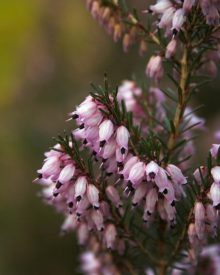 Heather is used for magick involving maturity, consummation, general luck, love, ritual power, conjuring ghosts, healing, protection, rain-making and water magick. Charms made with Heather can be worn or carried as protection against danger, rape and other violent crimes.
Heather is used for magick involving maturity, consummation, general luck, love, ritual power, conjuring ghosts, healing, protection, rain-making and water magick. Charms made with Heather can be worn or carried as protection against danger, rape and other violent crimes.
This flower represents good fortune and Heather can also be carried as a lucky charm. It was believed that wearing the blossom associated with your month of birth would bring exceptionally good luck – therefore people born in the month of Heather (August) should carry White Heather, for even better luck throughout the year.
Legend has it that a gift of white Heather brings luck to both the giver and the receiver, whereas red Heather is said to have been colored by heathens killed in battle by Christians, so is less lucky.
Heather is associated with secrets from the Otherworld. A sprig of white Heather placed in a special place of silence and meditation has the power to conjure ghosts, haints or spirits.
After picking a piece of white Heather at midnight, place it in a glass of river water in the darkest corner of your home. Sit and think of a departed loved one and it is said that the loved ones shadow will visit you.
Heather is said to ignite faery passions and open portals between their world and our own. Heather represents solitude because it thrives in wide open spaces, and Faeries who enjoy living in such undisturbed places are said to feast on the tender stalks of Heather. The Fae of this flower are drawn to humans who are shy.
Heather is useful for Solitary healing work (going within). Heather, if used along with Mistletoe, creates powerful healing medicine in both spiritual and physical aspects.
Heather can be used at Midsummer to promote love – carry red Heather for passion or white Heather for cooling the passion of unwanted suitors. If you give someone a gift of Heather it means: ‘Admiration’. A charm bag filled with Heather can be carried for decreasing egotism or self-involvement.
As a water herb, Heather is very useful in weather magick. When burned outdoors with Fern, the herbal smoke of Heather attracts rain. Bouquets of Heather and Fern can also be dipped in water to call rain.
Recommended Reading:
- Year of Moons, Season of Trees
- Tree Medicine Tree Magic
- A Druid’s Herbal
- Celtic Astrology
- Glamoury: Magic of the Celtic Green World
- The Book of Druidry
Source: dutchie.org
Egyptian priests believed that cats carried the magnetic forces of nature and so close proximity to the creatures enabled them to access these powers.
- Ruler: Bastet and/or Freya
- Type: Animal
- Magickal Form: Alive, whiskers, hair
- Qualities: Magick, Mystery, Independence
This animal is the most common of the witches’ familiars. They are very sensitive to occult workings and wise in the ways of the goddess. In order to make the cat a familiar, it must taste the blood of the witch.
The correct way to do this is to let the cat become your familiar in his or her own time. You will know when this occurs, as he or she will take a good hard bite out of your hand, cheek, or leg and draw blood. Voila! You are now bonded for eternal life.
Cat’s are excellent weather forecasters, and can be used in various methods of divination. More info can be found here: Cats
When a cat drops a whisker, place it on the altar for good luck. It is very bad luck to cut or pluck a whisker from a cat. Cat hair may be obtained by rubbing the back against the grain. Add the hairs to gamblers’ luck potions to increase your chances of winning.
- Black cats are very lucky indeed and you will be blessed when one crosses your path.
- Red cats and calico cats bring money.
- A Gray cat will protect you.
- A Siamese cat will bring laughter into your life.
A Magickal Invitation
Here’s a nice little invocation to bring some “cat magick” into your life, you can use it to speak to your own cat, or you can invoke the energy through the use of pictures, or whatever else has meaning for you personally.
Littlest lion, panther in miniature,
Help me in a my magical endeavors,
Teach me to see my path through dark places,
Help me to sift the necessary from the unnecessary
And to relax and enjoy life.
Strengthened my magic and carry it to its destination.
Witches and Cats
“All cats are grey at night.”
~Old French Proverb
No other animal is more frequently linked with Witches and the Craft than the cat, and in particular the black cat.
This is not just part of the mythology of the Craft, as many Witches live with cats. Notice I say “live with” not “own.” No one who knows cats will ever consider that you can have possession of one! Having said that, there is no reason why you have to live with a cat to be a Witch.
There is an enormous body of folklore surrounding the cat. A cat washing behind it’s ears is said to forecast rain; stroking an affected eye with a cat’s tail was thought to cure a stye, and so forth. Whatever you feel about such sayings there is no doubt that the cat is a very magical animal. One of mine, now sadly dead, could tell the difference between a true Witch and a pretender. Certainly both my current cats pay great attention whenever I am practicing the Craft, and can distinguish between a candle lit for magic and one lit for ambiance.
Another way in which cats and Witches are linked is that cats are probably the best domestic animal for borrowing. That is when you transfer a part of your mind into the body of the animal so that you can travel in it’s shape and experience the things it sees and does. Indeed; it is thought that the saying that a cat has nine lives is an indication of the number of times a Witch can ride with a cat in this way.
For Your Cat
Catnip has an aromatic odor, similar in scent to both Pennyroyal and Mint. Because of its powerful and unusual smell, catnip has a strange fascination for cats, who will destroy any plant of it that may happen to be bruised. According to Maud Grieve’s A Modern Herbal, there is a saying about catnip:
If you set it, the cats will eat it,
If you sow it, the cats don’t know it.
If you give your feline a bit of catnip, it will help strengthen the psychic bond between you, in addition to getting your cat as high as a kite. Although typically used in pet-related workings, catnip is also an herb of love, and can be included in sachets or incense.
The “Familiar” Cat
A cat totem encourages agility in both body and mind. You will be challenged with new ideas and places. The cat gives you clearer perception. This spirit helper is resourceful, strong and fearless. It will give you courage and confidence.
Examine the colors, character and behaviors of your Cat. Everything about it will reflect in your own life. When a Cat becomes predominant in your life, magic and mystery come alive.
Associated with the Norse Goddess of Fertility Freyja and the Hindu Goddess of Childbirth, Shasthi and of course, the Egyptian Goddess Bastet who takes the form of a cat.
Petitioning Freya With Cat Magick
Freya, “She Who Shines Over the Sea,” has associations with cats as powerful as Bastet. The old Norse tradition of paying tribute to Freya and seeking her aid or guidance involved feeding milk to cats.
Put out milk for stray cats. If you don’t live in an area with stray cats, bring contributions to a shelter or adopt a gray stray cat.
The feeding isn’t done by rote but as a conscious offering. Speak with Freya simultaneously, explain your needs, desires, and broken heart and request assistance.
Pay attention; her response may come through the cats themselves.
Celtic Cat Lore
Many Celtic legends pictured the Cat as a ferocious and evil creature. However, that may have been because Cats were untamed during the time of the Druids. It was a potent totem animal of several clans and Caithness, named after the Clan of the Catti, is one example.
In Irish lore, Finn mac Cumhail was said to have fought a clan of “cat-headed” people…most probably Celts who wore cat skins on their helmets. The Cat was thought to be a strong protector, especially when facing a confrontational situation.
Sources:
- ACORN is a symbol of great luck and fortune.
- ALLSPICE is burned as an incense to attract money or luck, and is also added to such mixtures.
- ALOE is hung over houses and doors in Africa to bring good luck.
- ANGELICA is considered lucky. Rub the root between your palms when you gamble or pick your lottery numbers.
- BAMBOO placed over the door is lucky, since its wood never changes color.
- BANYAN TREES bring good luck when sat under or looked at.
- BEECH, carry small pieces of the bark in your pocket for luck and success.
- BLUEBELL brings luck when it is picked up and the following words recited: “Bluebell, bluebell, bring me some luck before tomorrow night.” Slip it into your shoe to seal the spell.
- BORAGE, place fresh blossoms on an altar to bring luck and power to your spells.
- BUCKEYE, rub the buckeye with cinnamon oil and carry in the pocket to increase your luck at winning bets.
- CALAMUS brings good luck to the gardener when grown.
- CINNAMON is a favorite of many gods and goddesses, sprinkle powdered cinnamon on offerings to attract attention and win the favor of the gods.
- CLOVER or SHAMROCK is a symbol of luck, leprechauns, and wishes and is a powerful talisman to carry.
- COTTON, placed in a sugar bowl will attract good luck, as it will if cotton is thrown over the right shoulder at dawn. In the latter case, the good luck will come before the day is over.
- DAFFODIL plucked and worn next to the heart will bring good luck.
- FERN brings good luck to the person who breaks the first fern frond of Spring.
- HENNA, stain the hands with henna for luck and protection.
- HICKORY, burn hickory bark for luck and to dispel evil.
- HOLLY is carried to promote good luck, especially by men, since the holly is a ‘male’ plant. (IVY is the corresponding plant for women.) It is also hung around the house for good luck at Yule.
- HORSETAIL, carry the dried leaves in your pocket at the racetrack to pick the winners.
- HUCKLEBERRY, carry or eat the berries for good luck and protection.
- IRISH MOSS is carried or placed beneath rugs to increase luck and to ensure a steady flow of money into the house or pockets of the person.
- IVY, growing ivy brings good luck and protection to a property.
- JOB’S TEARS: Three seeds are carried for good luck.
- KAVA-KAVA tea is drunk to offer protection against evil and to invite in good luck in Polynesia.
- LUCKY HAND (hand of Power, Hand Root, Helping Hand, Salap) is the root of an orchid plant and is one of the most famous New Orleans magical botanicals. It has long been placed in sachets and conjure bags for luck and general success.
- MOJO BEANS, also called African wishing beans. Wear them in a necklace or bracelet or carry loose beans in a red conjure bag for good luck.
- MOSS taken from a gravestone and carried in your pocket, is a good ensurer of luck, especially financial luck.
- NUTMEG is a gambler’s favorite, it promotes winning in games of chance.
- OAK MOSS is great for money and luck formulas.
- OLIVE leaves, worn, bring luck.
- ORANGE PEEL is added to prosperity powders, incenses and mixtures, and the Chinese have long considered oranges symbols of luck and good fortune.
- PERSIMMON: If you wish to have good luck, bury green persimmons.
- PINEAPPLE, dried, is placed in bags and added to baths to draw good luck to the bather.
- SEAWEED, scrubbing yourself with seaweed while in the ocean brings good luck and leads to excellent employment opportunities.
- SHAMROCK or CLOVER is a symbol of luck, leprechauns, and wishes and is a powerful talisman to carry.
- SNAKEROOT, carry the root of this plant as a luck and money talisman.
- STRAW is lucky, hence it is often carried in small bags. For a home luck talisman, take a used horseshoe and some straw, sew up into a small bag, and place it above or below the bed.
- VETIVERT is carried to attract luck.
- VIOLET flowers are carried to bring changes in luck and fortune.
- WOOD ROSE is carried to attract good luck and fortune. Also place some in the home to ensure it is lucky as well.
- YELLOW SPLIT PEAS bring luck and fame.
- YERBA BUENA is added to gamblers’ luck spells to increase your chances of winning.
Note: This post was put together by Shirley Twofeathers, you may repost and share it only if you give me credit and a link back to this website. Blessed be.
Keys were traditionally made of iron. Consequently, it made good sense to touch a key whenever danger threatened. Keys were considered lucky, and commonly placed under a child’s pillow to keep him or her safe while asleep.
To find an old key is magical. It is said that the finder will experience spiritual mysteries and have prophetic dreams. They will become a channel of communication between heaven and earth. A rusty key is a good omen, as it indicates an inheritance.
Wearing an old-fashioned key will unlock spiritual doors. Perform spells with identical keys, which are then worn by lovers to protect their relationship from infiltration. A key given to a lover who is going far away will keep you in his or her heart.
When lovers exchange keys, it is believed that they are unlocking each other’s hearts. It symbolizes love and happiness.
In Japan, three keys tied together create a powerful lucky charm that attracts love, health, and wealth.
Keys can also be used as a magickal charm or talisman when something needs to be unlocked in some way. For example, Jewish midwives put the key to the synagogue into the hand of a woman who was about to give birth, in the hopes that the association would help the baby “unlock” the door of the womb. Keys were also buried with people in order that the gates to the Underworld would open easily.
It is considered bad luck to drop a key, and even worse luck to accidentally break one. To break a key is an unfortunate omen: it predicts a broken relationship. It is also considered bad luck to jangle bunches of keys on Wednesdays. However, jangling keys can avert the evil eye, and this can be done on any day of the week.
Losing keys is considered an omen of some disaster, usually involving a death.
People turning twenty-one years old were often given cardboard keys to celebrate this milestone of maturity and independence. A popular song in 1912 mentions this custom in the following lyrics:
I’m twenty-one today,
Twenty-one today.
I’ve got the key of the door,
Never been twenty-one before.
Information collected from a variety of sources.
- Ruler: Apollo, Druids, Venus
- Type: Herb
- Magickal Form: Berries, Leaves, Wood
- Use for: Fertility, protection, love, healing, luck, and invisibility
Mistletoe is another important plant that is used in many holiday traditions surrounding the winter solstice. Druids believed that anything found growing on an oak tree had been sent from heaven and mistletoe found on oaks was especially sacred.
Said to lose its power once it touches the ground, mistletoe is a holy herb and sacred to many deities. Mistletoe was perceived as being in a category all its own. Although it lives on trees, it’s not a tree. Although it’s like a plant, it doesn’t grow in either Earth or Water.
In the Celtic language, mistletoe means “All heal” and it was thought to possess miraculous healing powers and hold the soul of the host tree. Mistletoe would be hung over the entry into peoples’ homes and atop doorways within their homes as a token of good will and peace to all comers.
It is said that when warring Viking armies met under a tree in which mistletoe occurred that they would cease battle for the remainder of that day. Today, many people still hang mistletoe in their homes and couples kiss when they meet under the mistletoe.
In some traditions each time a couple kiss under the mistletoe a single white berry is removed and the kissing ceases when the final berry is removed. Kissing a lover under the mistletoe will make this relationship last. There is a myth associated with this practice that stated if any unmarried women of the household went unkissed during the hanging of the mistletoe, they would not marry in the coming year.
As a matter of fact, you can tie mistletoe with a red ribbon and hang it in your home any time of the year for luck, protection and extra kissing.
- Adding mistletoe to other love potions increases their power.
- Place the leaves or berries high on a mantel in the home to protect its occupants.
- Leave a sprig of mistletoe in the home of someone you want to be remembered by.
- Twist marjoram and thyme around mistletoe and hang it in the corners of each room to attract luck and good fortune.
- Carve a ring from mistletoe wood and wear it for protection and to ward off illness.
Mistletoe is believed to possess a magical affinity for seizure disorders. To prevent seizures, carry a piece of mistletoe in your pocket or within a conjure bag. Jewelry and charms carved from mistletoe wood can also be worn or carried. The most potent mistletoe seizure charm is a magic knife with an iron blade and a handle carved from mistletoe wood.
Mistletoe berries resemble tiny golden moons enhancing the lunar and fertility symbolism. According to Pliny, a piece of mistletoe carried as an amulet helps a woman conceive. Fertility charms are carved from mistletoe wood, and then carried or attached to a pin and worn as a brooch. The most powerful mistletoe jewelry is embellished with pearls.
Mistletoe allegedly enhances the reproductive capacity of animals. Not only does it promote conception, it’s believed to also prevent miscarriage, particularly for sheep and goats.
Hang mistletoe in the barn, or place it on around the animal in question. Be aware that the amuletic part of mistletoe is usually the “wood” – and again, be cautious as mistletoe can be toxic, especially the berries.
In Sweden mistletoe is known as “thunderbroom.” Place it over thresholds, and hang it from the wall to protect a home from lightning. You can wear mistletoe around your neck to promote invisibility and hang it on a baby’s cradle to prevent fairies from stealing the youngster.
CAUTION: The leaves and berries of mistletoe are poisonous. Use caution when handling and keep away from small children and pets.
Sources:
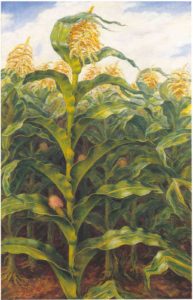 Scientific name: Zea Mays.
Scientific name: Zea Mays.
Common names: Indian Corn, Maize, Squaw Corn
Type: Vegetable
Ruler: Sun, Aztec and Mayan deities, Earth Mother
Planet: Venus and Saturn
Element: Earth
Magickal Form: On or off the cob, popped, white, yellow, blue, red
Parts used: Seeds, silk, husks
Magickal Properties: Fertility, Protection, Luck, Divination, Prosperity
Corn can be used for spells protection, luck, and in divination. Corn on the altar represents the power of the Corn Mother, She who blesses and nourishes all Her earthly children. Corn on the cob represents the phallic gods and draws creative or sexual energy.
Often Corn husks and Wheat straw are used to create what are called ‘Corn Dollies’. These are usually in the shape of a doll or are woven into various other shapes and are carried as charms or put on an altar. Corn dollies can be hung from the rafters of a house to offer protection for the house and all those who dwell within. Corn can also be used in many forms of fertility magic. Corn silk is a very powerful ingredient when added to love spells; it is designed to attract the person you desire.
Corn can be worn as jewelry or in amulets to make the wearer closer to the spirit of the earth. Corn can be used to divine the future. An old folk spell said that if a damsel found a blood-red ear of maize, she would have a suitor before the year was out. Financial or love wishes that are shouted out as popcorn is popping will come true.
- Eat yellow corn on the summer solstice (June 21) for blessings of prosperity
- Consume white corn for spiritual insight
- Scatter blue corn meal to purify and bless a space
- Hang red corn above doorways at harvest time to protect rewards that have been reaped
Corn is a sacred Druidic herb of Mean Fomhair (also called Mabon) and of Samhain. Corn is associated with the element of earth and the planets Venus and Saturn. Because Corn was such an important part of the food supply of many early cultures, almost every ancient religion had a Corn God or Goddess.
Some of these Corn deities are: Annonaria, Roman Goddess protector of the Corn supplies; Cerklicing, the Latvian god of fields and Corn; Kurke, the Prussian God of Corn; Nepit, an Egyptian Corn Goddess and Neper an Egyptian Corn-God; Nodutus, the Roman god who was held responsible for making the knots in the stalks of Corn; Nzeanzo, the Sudan god of rain, medicine, Corn, fertility and metal-working; Robigo, a Roman Goddess of Corn; Iyatiku, the Pueblo Corn Goddess; and Gabjauja, the Lithuanian Goddess of Corn (with the advent of Christianity She was, as were so many other Pagan deities, reduced to a demon).
Important note:
Remember that when harvesting Corn for magickal uses it is important to say thank you to the grain spirits:
“Mother of Corn
I harvest thee.
In spring thou wilt
A maiden be.”
Collected from various sources, including Magickal Winds
